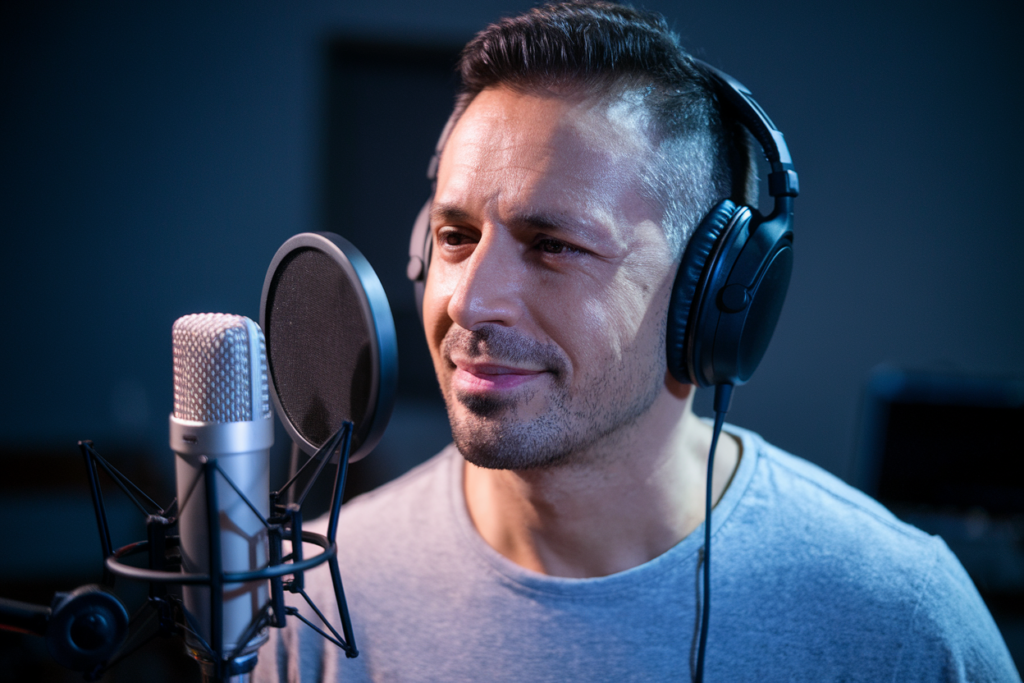Key Takeaways
- Understanding Dialects: Familiarity with Turkish dialects is crucial for effective dubbing, as each dialect carries unique characteristics that influence audience engagement.
- Main Dialects for Dubbing: Key Turkish dialects include Istanbul Turkish (standard), Aegean Turkish (regional authenticity), Anatolian Turkish (cultural diversity), Black Sea Turkish (unique phonetics), and Eastern Anatolian dialects (rich cultural context).
- Cultural Significance: Different dialects reflect local customs and attitudes, enhancing storytelling by making characters relatable and honoring viewers’ cultural backgrounds.
- Audience Engagement: Utilizing familiar dialects elevates viewer immersion and emotional connection, ensuring that the message resonates deeply with diverse audiences across Turkey.
- Challenges in Dubbing: Achieving translation accuracy and maintaining voice acting authenticity are essential to avoid alienating audiences and enriching character portrayal through localized performances.
Ever wondered which Turkish dialects are best for dubbing? With Turkey’s rich linguistic landscape, choosing the right one can make or break your project. Whether you’re localizing films, TV shows, or video games, understanding the nuances of relevant Turkish dialects is crucial.
Overview Of Turkish Dialects
Turkish boasts a rich array of dialects, each with unique characteristics that influence how voiceovers resonate with audiences. Understanding these dialect variations is essential for anyone involved in dubbing projects.
Main Dialects
- Istanbul Turkish
Istanbul Turkish serves as the standard dialect and finds widespread use in media. Most voice talents prefer this variant for its clarity and broad comprehension.
- Aegean Turkish
Aegean Turkish includes distinct intonations and local vocabulary. This dialect can add regional authenticity to projects set in western Turkey.
- Anatolian Turkish
Anatolian Turkish features diverse sub-dialects influenced by various ethnic groups. Voice artists familiar with these nuances can enhance the localization process significantly.
- Black Sea Turkish
Black Sea Turkish has unique phonetic qualities and expressions, making it ideal for projects targeting audiences from northern Turkey.
- Eastern Anatolian Dialects
These dialects vary greatly among regions like Kurdish-influenced areas or Arab-speaking communities, each offering rich cultural context through voice performances.
Importance for Dubbing
Selecting the appropriate dialect not only elevates the quality of your project but also resonates more deeply with viewers or gamers familiar with specific regional traits. Consideration of these factors enhances audience engagement, ensuring that your voiceover talent delivers an authentic experience aligned with cultural expectations.
Understanding these nuances helps you choose the right voice actor who brings depth to characters, making them relatable to your target audience while enhancing overall storytelling through effective localization strategies.
Importance Of Dialects In Dubbing
Selecting the right dialect in dubbing plays a crucial role in bringing stories to life. It creates authentic connections between the content and its audience, enhancing overall engagement.
Cultural Significance
Cultural nuances shape how people perceive characters and narratives. Different Turkish dialects carry distinct cultural connotations that resonate with specific audiences. For instance, Istanbul Turkish serves as the standard for media but lacks the regional flavor found in Aegean or Anatolian dialects. When voice actors embody these variations, they breathe life into characters by reflecting local customs and attitudes. This authenticity not only enriches storytelling but also honors viewers’ cultural backgrounds.
Audience Engagement
Engaging your audience requires understanding their linguistic preferences. Using a familiar dialect can elevate viewer immersion, making them feel represented within the story. Imagine how much more impactful a character sounds when voiced by someone who speaks Black Sea Turkish compared to standard Istanbul Turkish—it’s all about relatability! Tailoring your voiceovers to specific regional traits enhances emotional connection and ensures that your message resonates deeply with listeners across Turkey’s diverse landscape.
Major Relevant Turkish Dialects For Dubbing
Selecting the right Turkish dialect for dubbing plays a pivotal role in creating authentic voiceovers that resonate with audiences. Here’s a closer look at some major dialects relevant to dubbing projects.
Istanbul Turkish
Istanbul Turkish serves as the standard dialect widely used in media and entertainment. Its clear pronunciation and neutrality make it ideal for various voiceover projects, including films, commercials, and TV shows. Voice actors often gravitate towards this dialect due to its broad understandability across Turkey. This means your project can reach a wider audience without losing clarity or engagement.
Aegean Dialect
Aegean Turkish brings regional authenticity to your projects with its distinct intonations and expressions. It’s characterized by melodic speech patterns that convey warmth and familiarity. Utilizing Aegean voice talent can enrich storytelling by reflecting local customs and nuances, making characters more relatable for viewers from that region. If you’re aiming for an emotional connection with your audience, incorporating this dialect might just be the perfect choice.
Eastern Anatolian Dialect
Eastern Anatolian dialects are diverse and vary significantly among communities, each carrying unique phonetic qualities. These dialects provide rich cultural context through voice performances, enhancing the depth of characters portrayed in your project. By utilizing Eastern Anatolian voice artists, you tap into specific regional traits that resonate deeply with local audiences—offering them an experience that’s both engaging and culturally relevant.
Understanding these major Turkish dialects empowers you to select the most suitable one for your dubbing needs, ensuring your content connects authentically with its intended audience while elevating overall production quality.
Challenges In Dubbing With Turkish Dialects
Dubbing with Turkish dialects presents unique challenges that require careful consideration. From ensuring translation accuracy to maintaining voice acting authenticity, each aspect plays a crucial role in the overall success of a project.
Translation Accuracy
Achieving translation accuracy can be complex when working with various Turkish dialects. Words and phrases often carry different meanings or connotations based on regional usage. For instance, a term commonly understood in Istanbul may not resonate the same way in Aegean regions. This discrepancy affects script adaptation and requires skilled translators familiar with local nuances. When these subtleties are overlooked, it risks alienating audiences who connect deeply with their dialect’s uniqueness.
Voice Acting Authenticity
Voice acting authenticity is vital for creating relatable characters in dubbed content. When selecting voice actors, consider their familiarity with specific Turkish dialects; this ensures they embody the cultural references and emotional depth required for the role. An actor fluent in Anatolian Turkish may deliver a performance that feels genuine to local audiences compared to someone unfamiliar with its distinct intonations. The right voice over talent enriches storytelling by accurately portraying characters’ backgrounds and personalities, making viewers feel more connected to what they see on screen.
Addressing these challenges enhances viewer engagement and strengthens the impact of your project across Turkey’s diverse linguistic landscape.
Conclusion
Selecting the right Turkish dialect for your dubbing project is essential for creating an authentic connection with your audience. The nuances of each dialect can significantly enhance storytelling and viewer engagement. By understanding the distinct characteristics of Istanbul, Aegean, Anatolian, Black Sea, and Eastern Anatolian Turkish, you can make informed choices that resonate deeply with specific regional audiences.
Prioritizing dialect accuracy not only elevates the quality of your project but also honors cultural backgrounds. When you invest in skilled translators and voice actors familiar with these dialects, you ensure a relatable and immersive experience for viewers or gamers. Embracing Turkey’s rich linguistic diversity will ultimately strengthen the impact of your content across its varied landscape.
Frequently Asked Questions
What are the main Turkish dialects discussed in the article?
The article highlights several key Turkish dialects: Istanbul Turkish (the standard for media), Aegean Turkish, Anatolian Turkish, Black Sea Turkish, and various Eastern Anatolian dialects. Each dialect has unique characteristics that enhance localization efforts in dubbing projects.
Why is selecting the right Turkish dialect important for dubbing?
Choosing the appropriate dialect ensures better audience engagement and authenticity. It allows voice actors to connect with regional traits, enriching storytelling and making characters more relatable to local viewers or gamers.
How does Istanbul Turkish differ from other dialects?
Istanbul Turkish is characterized by its clear pronunciation and neutrality, making it suitable for a broad audience. In contrast, regional dialects like Aegean or Anatolian offer distinct intonations that add cultural flavor to voice performances.
What challenges exist when dubbing with Turkish dialects?
Key challenges include achieving translation accuracy due to varying meanings across regions and ensuring voice acting authenticity. Both require skilled translators and fluent voice actors familiar with local nuances for effective localization.
How do different dialects impact audience engagement?
Using a familiar dialect elevates viewer immersion by fostering emotional connections. Tailoring voiceovers to specific regional traits enhances relatability and ensures that content resonates deeply with diverse audiences throughout Turkey.







